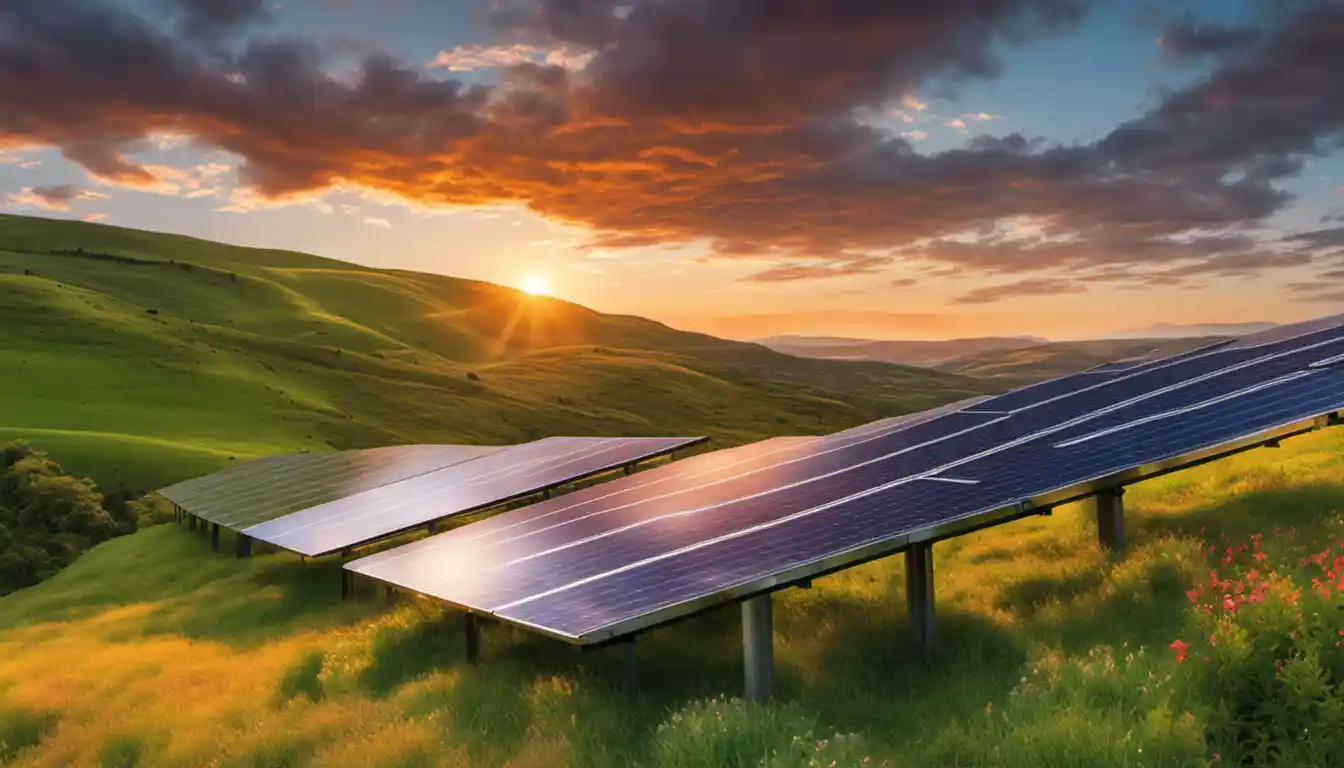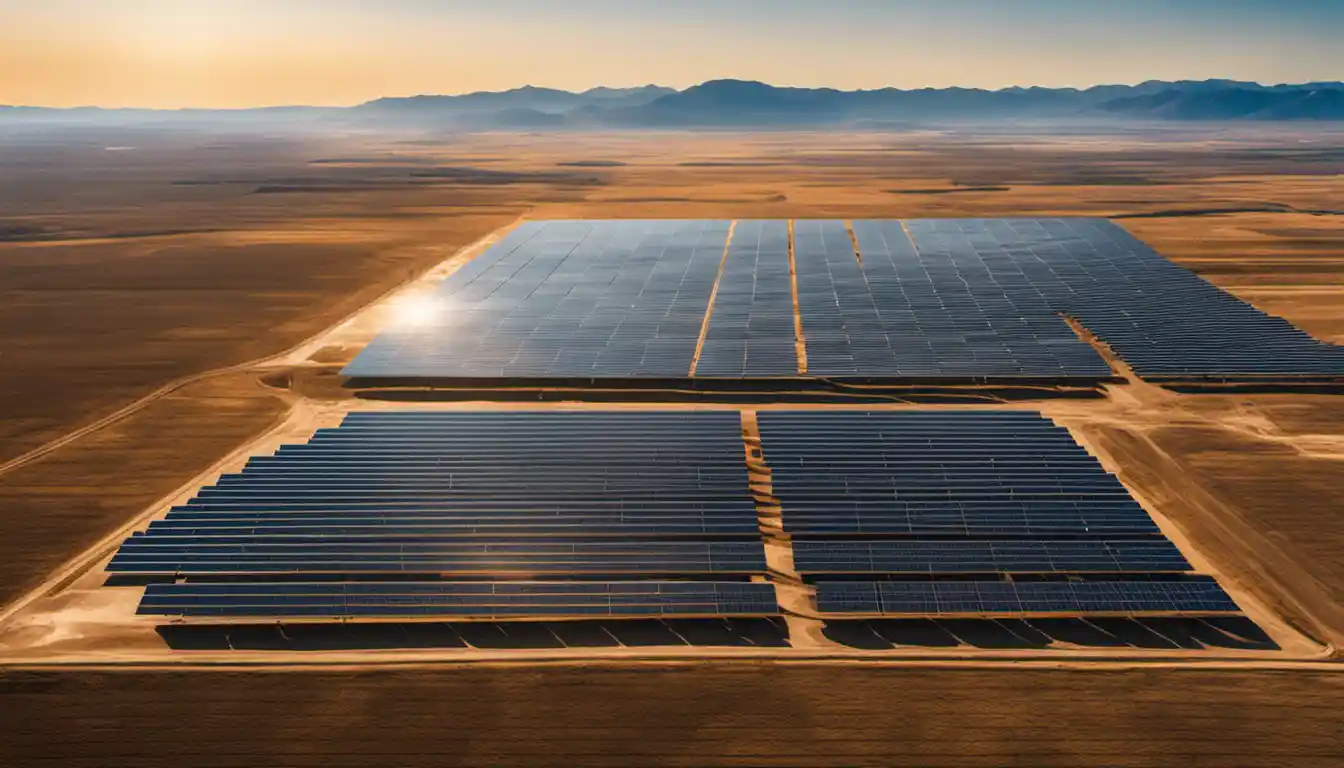Introduction to Thin Film Solar Panels
Thin film solar panels are a type of photovoltaic solar panel made by depositing one or more thin layers, or thin film (TF) of photovoltaic material on a substrate. They are lighter and more flexible than traditional crystalline-based solar panels, which can make them beneficial for certain installations.
Definition of Thin Film Solar Panels
Simply put, thin film solar panels are quite literally thinner versions of the traditional, bulkier photovoltaic cells. How thin, you ask? We’re talking razor-thin. These modules are made by applying several layers of photovoltaic material onto a base substrate – like glass or plastic. This stacking allows for the absorption of sunlight and the generation of electricity, just like in their stockier counterparts.
When people ask, “What are thin film solar panels?” many only think about their slim silhouette. However, keep in mind that the sleekness is not their only advantage. They’re easier to produce, they perform well in various climates, and they’re versatile in terms of application. When we mention thin film solar panel efficiency, we aren’t just talking numbers – we’re talking practicality and future-centric ideas as well.
See also: Efficiency of Thin Film Solar Panels: A Comprehensive Guide for Optimal Energy Use
Types of Thin Film Solar Cells

There are different types of thin film solar cells based on the photovoltaic material used. Let’s get to know them:
-
Amorphous Solar Cells: Made with silicon, these cells’ semiconductor material has a looser, unstructured composition, hence the name “amorphous”. This type of thin film solar cell is less efficient, but also less expensive.
-
Cadmium Telluride (CdTe) Panels: CdTe solar panels are the most commonly used thin film solar cells, boasting a faster payback time compared to other types.
-
Copper Indium Gallium Diselenide (CIGS) Solar Panels: CIGS hold the record for highest efficiency among thin film cells, with laboratory efficiency reaching up to nearly 20%.
-
Organic Photovoltaic (OPV) Solar Panels: OPV cells use organic materials and can even utilize biomaterials, making them a potentially more sustainable option if the technology can scale up efficaciously.
See also: Thin Film Solar Cells Advantages and Disadvantages: An In-Depth Analysis
How Thin Film Solar Cells are Made
In understanding “how thin film solar cells work,” it’s key to comprehend their manufacturing process. The production involves thin layers – around one micrometer thick – being applied to a substrate. This can be done through various methods such as evaporation, sputtering, or chemical vapor deposition.
The materials used in thin film solar cells are a crucial part of what gives each type its distinct characteristics. The value proposition and lifecycle of these materials must be known to fully understand “what is thin film solar cell” technology.
For more details regarding the composition of various thin film solar cells, please refer to the page on types of solar panels.
Thin Film Solar Cell Working Principle
The “thin film solar cell working principle” follows the same base guidelines as traditional photovoltaics. When sunlight hits the thin solar film, the semiconducting material absorbs the light, freeing electrons and creating an electric field that can be channeled into usable electricity.
Applications of Thin Film Solar Cells

Thin film solar cells’ applications are varied, showcasing just how versatile this technology can be:
-
Transparent Solar Cells: Imagine a world where every window could also generate solar power. With semi-transparent thin film solar cells, we’re one step closer to realizing such a future.
-
Building-Integrated Photovoltaics: Thin film cells can be incorporated into buildings, effectively turning walls and roofs into power generators.
-
Thin Film Solar on Metal Roofs: The flexibility and low weight of thin film cells allow them to be used on metal roofs, which might not be feasible with traditional panels.
To learn more about the potential applications, check out this article on thin film solar panel efficiency.
Efficiency of Thin Film Solar Panels
One of the most frequent inquiries in the field is about thin film solar panel efficiency. While thin film solar panels’ efficiency is generally lower than that of traditional solar panels, advancements in technology are rapidly bridging this gap, and in some cases, they present distinct advantages. For instance, thin film solar cells perform comparatively better in low-light and high-heat conditions, which means they’re robust options for cloudy or particularly hot areas.
Cost and Market of Thin Film Solar Cells

The manufacturing process for thin film solar panels is less complicated, leading to less expensive production costs. This benefit generally trickles down to the buyer. However, country of manufacture, scale of production, and economies of scale play huge roles in influencing eventual costs. To understand more on what factors can affect these panels’ pricing, check out our article on thin film solar panels cost.
Durability and Lifetime of Thin Film Solar Cells
Thin film solar panels are thought to degrade faster than crystalline panels, but much like everything else in solar technology, it’s dependent on various environmental factors. Their lifespan can vary, and the technology and manufacturing quality are improving consistently. To learn more about the durability of thin film solar panels, check out the article on thin film solar panel lifespan.
Environmental and Health Impact of Thin Film Solar Cells
Compared to traditional solar panels, thin film panels use less raw material, which can lower their environmental impact. However, the specific materials in certain types of thin film panels raise other environmental and health concerns. For instance, CdTe panels utilize cadmium, a toxic heavy metal. But with panels being sealed and companies recycling used panels, many of these potential hazards can be mitigated.
As we continue to grapple with climate change, there’s a high likelihood that the increasing need for renewable sources of energy will make thin films the future of solar energy. While there are pros and cons, with advancements in technology, the scales should tip favorably towards our commitment to sustainable energy. Stay tuned with me on this journey into the greener future!



